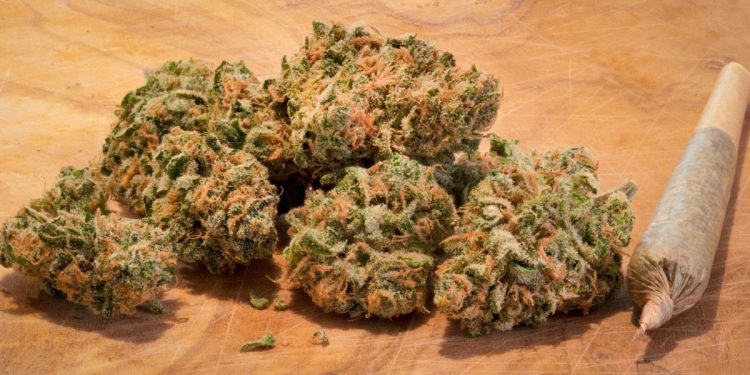When people think of an alternative to conventional treatments, some think of cannabis and related products. Cannabis and related products, such as CBD oil are popular because of their positive effects. Many advertisements promise pleasurable and therapeutic effects, such as stress and anxiety reduction. Cannabinoids are the main reason for these effects.
What Are Cannabinoids?
Cannabinoids are active constituents found in hemp, cannabis, and related plants. They’re also called cannabis compounds.
The most commonly-talked-about cannabinoids include cannabidiol (CBD) and delta-9-tetrahydrocannabinol (THC). These two are primarily found in cannabis products, wherein the latter causes psychoactive or ‘high’ effects. On the other hand, cannabidiol (CBD) is thought to help reduce pain and signs of inflammation. Learn more about CBD at shops like Woven Earth.
Other types of cannabinoids include the following:
- Cannabinol (CBN)
- Cannabigerol (CBG)
- Cannabichromene (CBC)
- Delta-9-tetrahydrocannabivarin (THCV)
- Cannabidivarin (CBDV)
- Cannabivarin (CBV)
But how many types of cannabinoids can you use at the same time? Read on below to find out more.
Cannabis Contains More Than 100 Cannabinoids
The Centers for Disease Control and Prevention explains that cannabis has over 100 cannabinoids. The cannabinoid level differs, depending on the marijuana plant’s parts, like the seeds, leaves, flowers, and stems. The strain of cannabis also affects the cannabinoid content of weed.
Cannabis naturally consists of many cannabinoids. Therefore, this fact can technically support the theory of an allowable number of cannabinoid types for consumption, which is a hundred or more.
But it doesn’t mean that consumers can take any amount of cannabis they desire. Cannabis can cause intense effects, depending on the dosage, potency, and strain.
Cannabinoids Have Different Effects
As mentioned, the allowable cannabinoid types you can consume largely depend on the herb’s direct effects. For instance, high-THC cannabis products, such as most Sativa strains, stimulate the brain to produce more dopamine. This hormone gives the user a euphoric, relaxed feeling. On the other hand, cannabis Indica strains produce sleepiness and couch-like effects that aid pain relief as you’ll learn from sites like wovenearth.com.
The Entourage Effect
When talking about cannabinoids, one must always consider the entourage effect. This effect refers to the synergistic combination of several cannabinoids, producing distinct benefits.
The entourage effect concept perceives the cannabinoids as a whole. Therefore, when you consume a cannabis product that contains THC and CBD, these two compounds produce an entourage effect. They create more beneficial effects than using each cannabinoid compound alone.
Many cannabis brands and breeders cultivate, manufacture, and advertise their products as highly beneficial because of the entourage effect. Because consumers find the entourage effect advantageous, most choose cannabinoid-containing products.
Research shows that patients with amyotrophic lateral sclerosis (ALS), a progressive nervous system disease that causes muscle control loss, can benefit from the synergy of THC and CBD like patients with post-traumatic stress disorder (PTSD).
The Route Of Administration
The mode in which you consume cannabinoid-containing products can affect the onset and duration of effects. Moreover, it also affects the body’s reaction to the number of cannabinoids it can consume simultaneously. For instance, dropping CBD tincture under the tongue has a faster onset of effect than ingesting CBD oil because the sublingual route allows the capillaries or small blood vessels in the mouth to absorb cannabidiol faster.
Another example is grinding a cannabis strain with CBD and THC to be vape-ready or using a vaping device to consume weed. You can expect a quicker onset of effect when you inhale the vapor than ingesting a cannabis-infused edible, like brownies or gummies.
While the effects of CBD products are only subtle, many health-cannabis experts advise starting from the lowest dose. In that way, consumers can assess their body’s reaction to the effects. The same is true with cannabis. Because cannabis may have several active cannabinoid compounds, low-dose, gradual consumption is highly recommended.
How Many Types Of Cannabinoids Can You Use?
You can use as many cannabinoid compounds as you prefer but with precaution. It’s important to note that cannabinoids must be considered a whole extract, like in cannabis products, and not a single entity. Moreover, one must be aware of the possible intense effects of taking high doses of cannabinoid-containing products.
But consumers can choose standalone cannabinoid-containing products, such as pure CBD. Isolates or pure CBD only contain cannabidiol because other cannabinoids, like THC and plant compounds, have been removed during manufacturing.
Conclusion
The consumption of cannabinoids depends on many factors. While cannabis consists of several types of cannabinoids, assessing an individual’s reaction to a specific strain is advisable, especially for first-time users. Consulting a doctor and other experts is a must, particularly for medical patients who want to consume cannabinoid-containing products.
























